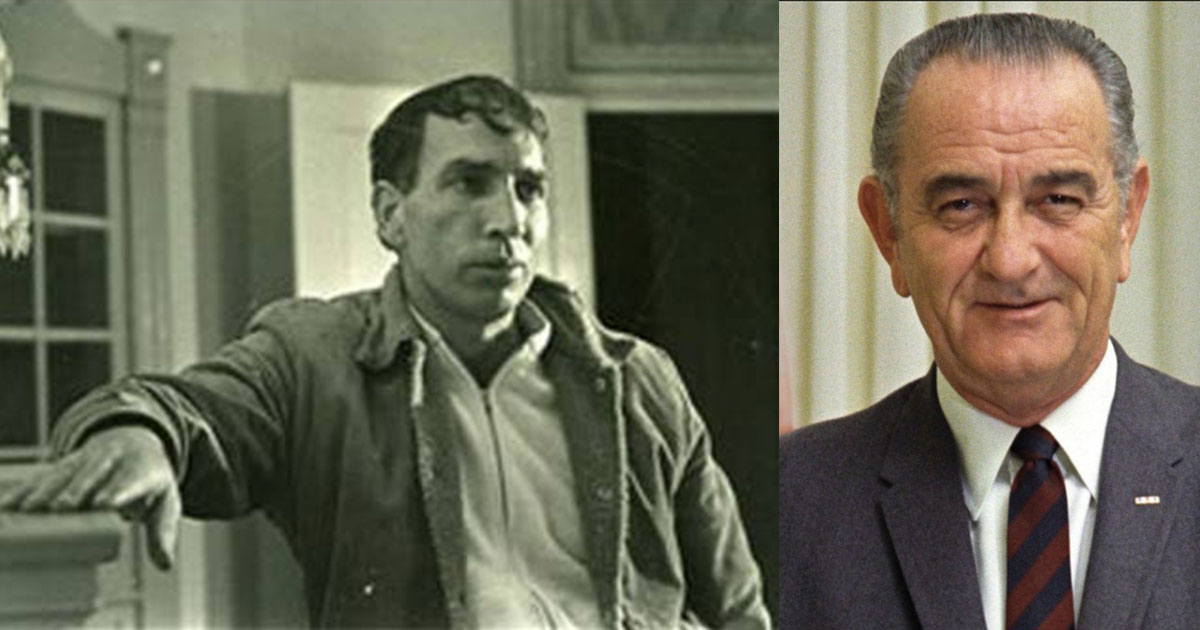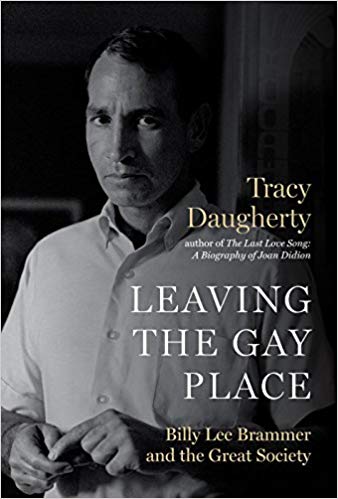
Leaving the Gay Place Lights a Candle for the Patron Saint of Austin’s Counterculture
Tracy Daugherty’s new biography of The Gay Place author Billy Lee Brammer is part poetic ode, part oral history — and always a wild ride.
Above: Billy Lee Brammer and Lyndon Johnson
The greatest novel ever written about Austin was penned by a man from Dallas, and it did not mention the capital city by name. Still, when Billy Lee Brammer’s The Gay Place hit bookstores in 1961, it caused a sensation not only among East Coast elites, who were delighted by this strange new breed — a Texas literary author — but also among the very people it profiled. A folksy political leviathan, Lyndon B. Johnson in all but name, made the book come alive but sullied Brammer’s complicated relationship with the president. The beer-swilling, incestuous group of Texas liberals who were also reproduced in the book, however, never fully abandoned Brammer, even as they were all swept up in the social and political upheaval of the 1960s.
Despite his Oak Cliff roots, Brammer was a fixture, and eventual glass-eyed patron saint, of Austin’s counterculture. The fame from his single, Salinger-like success and his eventual role as a pioneer in the recreational use and distribution of pharmaceuticals secured him a front-row seat to the machinations of the New Frontier, and eventually the rise and fall of Lyndon B. Johnson’s Great Society, along with the rakes, scorned women, crooks and congressmen who went along for the ride.

by Tracy Daugherty
University of Texas Press
$29.95; 448 pages
LBJ plays a suitably major role in Tracy Daugherty’s extensive and long-overdue biography of Brammer, Leaving the Gay Place: Billy Lee Brammer and the Great Society. While the subtitle suggests something of a political history, “Billy Lee Brammer and LBJ” might be more apt. The book is by turns a strong, clear biography (with shades of rock ’n’ roll memoir), a poetic ode to various places and people in midcentury Texas and an oral history, all of it plugging in to an increasingly turned-on, tuned-in and dropped-out Brammer. His story cannot be told without at least a firm sketch of his polestar, Johnson, for whom Brammer worked and later turned into the character of Arthur “Goddamn” Fenstemaker. Wisely, Daugherty deeply embeds the president’s rise and fall, his vasilations and crusades, tantrums and reveries, and his ever-mocked blackstrap drawl into the book, much the same way Brammer did in The Gay Place.
For his part, Brammer is also a mirror for the nation, a personification that is as central to telling his story as it is to “the Brammer Myth”: the whispers that Brammer and friends helped nurture the San Francisco hippie scene, that Brammer shared a mistress with JFK, that he introduced Austin to LSD and that he saw the Kennedy assassination up close (all, in Daugherty’s estimation, possibly true).
Brammer’s life was one of promise; he transitioned from a journalist to press aide for then-Senator Johnson in 1955, and stayed in Washington until ’59 before returning to journalism. Once the The Gay Place was published, Brammer was a hot commodity, an expert on Johnson, the man. But LBJ, incensed by the book, cut him off forever. What followed was a hard, sometimes enlightening and woefully unproductive decade, in which Brammer became a beloved figure in Austin’s writers’ scene until he finally succumbed to a fatal overdose. We follow Brammer from birth to his early death, from working-class white boy chugging Dr Pepper to pseudo-beatnik, then proto-hippie eating cake frosting straight from the tub, and finally the kindly emaciated Buddha of Austin, stealing and selling anything he finds for drugs, passing out fliers at Willie concerts for pocket money, and washing dishes at the Driskill (from which he naturally pilfered a few magnums of champagne). In Daugherty’s hyper-detailed profile, Brammer always led the Austin subculture’s transformation, from the liberals yakking under the oaks at Scholz’s to the crossroads of psychedelia to the City of the Cosmic Cowboy, a brand that still informs how the city sees (and sells) itself today. Bittersweet is a nice word for it. Tragedy is perhaps closer to the truth.
BLB and Austin friends, early 1970s, and oh, what a crew! Left to right (top row) Bud Shrake, Kathy Lowry Deely, Larry…
Posted by Billy Lee Brammer on Sunday, June 11, 2017
The story rolls along with some Brammerian lyricism, lending the book an intermittent sense of painterly detail. Brammer, who mangles words into perfectly imperfect, phonetic vernacular, is a good subject in this regard, and Daugherty is a worthy storyteller. Here he is describing Brammer in 1970, during a writer-in-residence stint at Bowling Green University, watching baseball on TV in a drug-induced haze: “Brammer turned up the Krishna chants, watched another strikeout. On the narrow roads circling the cornfields, horse-drawn wagons clattered past the town like little hearses, or the phantom contraption in that Emily Dickinson poem, the one where Death comes a-callin’.”
Well-known characters come and go, leaving faint imprints. The tale of Brammer’s friend Janis Joplin forms a subplot, Larry McMurtry is briefly Brammer’s ornery roommate and Ken Kesey drops in on a class Brammer briefly teaches at Southern Methodist University. For fans of Texas writers, there’s plenty to choose from — and it should be noted that Brammer, the first associate editor of the Texas Observer, was also the first to introduce cultural coverage to the magazine’s repertoire.
Despite his Oak Cliff roots, Brammer was a fixture, and eventual glass-eyed patron saint, of Austin’s counterculture.
Despite a few hiccups in pacing, including a detailed and mostly required meditation on the Kennedy assassination, Daughtery has done yeoman’s work in compiling interviews with Brammer’s family and friends, whose strong voices lend credence and color to a deeply loving profile. The question with any biography, even one as easter-egg-stuffed and occasionally Homeric as this, is whether it resonates, whether it has something to say of the past it relates, but also of our present. The themes of modernity, of fractured politics and fights both within and between ideological groups, certainly feel relevant. What’s more, this portrait of the artist as a dying man, forever plagued by sugar-rotted teeth and indecision, speaks to the paralyzing fears that often accompany periods of sudden change. Most of all, Brammer’s is the tale of a changing nation.
“From our vantage point, the real story of these new frontiers may be told most vividly now,” Daugherty sets out in his prologue, “by studying the movements and companions of a hard-to-locate man with the improbable name Billy Lee.”


